Review: Motorola Droid RAZR MAXX for Verizon Wireless
Jan 30, 2012, 12:43 PM by Eric M. Zeman
Motorola's Droid RAZR MAXX builds on the foundation set by the original RAZR and makes a wide number of improvements to an already good design. Here's Phone Scoop's full review of the RAZR MAXX.
Form
Is It Your Type?

Motorola took the Droid RAZR and slapped a whopping 3300mAh battery inside and called it the RAZR MAXX. This Android phone for Verizon not only remains thin, but goes and goes and goes like the Energizer Bunny. If you need an attractive, powerful smartphone that will last all day long on Verizon's LTE 4G network, the Droid RAZR MAXX could be the Droid you're looking for.
Body
The Droid RAZR was a good looking phone. It's heftier brother, the RAZR MAXX, is also a good looking phone, there's just more of it to love. Where the RAZR was a ludicrous 7.1mm thick, the RAZR MAXX is a more average 8.9mm thick. It's hardly what anyone could call chubby, and that extra thickness and weight manages to make the RAZR MAXX feel sturdier than the original RAZR. It carries forward everything I liked about the RAZR in an overall more complete package.
In order to get the MAXX so thin, Motorola employed the pancake method (aka, smooshed it), pushing the width and length out to attain the thin profile of the MAXX. It's a huge phone for being so thin. Where the RAZR was akin to Larry Bird, I'd say the RAZR MAXX is more like Shaquille O'Neal. Less lanky, more muscular.
In the hand, it feels wide. I have big hands, and I can't wrap them all the way around the RAZR MAXX. The quality of the materials and build, however, feel great — the best I can recall from a Motorola in recent months. The glass surface feels wonderful under the thumbs and all the seams are fit snugly together. The back surface is composed of Kevlar and feels awesome to the touch. As with the RAZR, the back cover of the RAZR MAXX really attracts finger grease and oils.
The front of the RAZR MAXX is mostly display, and Motorola put the typical four Android controls under the screen in the form of capacitive buttons. The amount of haptic feedback given them by Motorola is just as good as on the RAZR; they feel great to use. Though regular physical buttons would be easier to find in the dark, the back-lit keys are easy to see.
The SIM card slot and microSD card slot are located on the left side of the RAZR MAXX. They are protected by an annoyingly difficult-to-remove hatch. You have to *really* want to get at either card to spend the time and energy prying it open.
The lock button is easy to find, and feels good thanks to its textured surface. It also doesn't hurt that it's silver while the rest of the phone is black. I can't say the same for the volume toggle. It's black and nearly invisible. Worse, it's too small and the action and feedback is absolutely terrible. The size is the biggest problem. It's about 1.5cm, which means you can accidentally turn it up when you mean to turn it down and vice versa.
Motorola opted to put the micro-USB port, mini-HDMI port, and 3.5mm headset jack on the top of the phone. I can't stand when handset makers put the charging ports on the top. It makes using the phone when it is plugged in much more awkward than it needs to be. In this case, the MAXX's ports are configured so that they will work with Motorola's lapdock accessories. (I still wish they were on the side.)
As with the RAZR, the battery is sealed into the RAZR MAXX, which means no replacing it. The good news is, however, that with 3300mAh of power encapsulated in there, you'll have no need of a spare power supply.
The Three S's
Screen
The RAZR MAXX has the same display that the RAZR did. It measures 4.3-inches and rates qHD resolution (540 x 960 pixels). If you look closely, you can see pixels here and there, along the edges of icons, text, and graphics. This is because the display uses PenTile technology. The display isn't as bright as I was hoping it would be, either. It is a Super AMOLED, but it doesn't come off as brilliant as comparable Super AMOLEDs from Samsung. Also, the color loses accuracy when viewed at an angle. When looking at a white web page straight on, it looks white. Look at it from an angle, however, and it looks blue. This means it won't be as great to share what's on the screen with friends, as it will be harder for them to see it unless you hand over the phone.
Signal
The RAZR MAXX is a 4G/3G device, meaning it uses Verizon's CDMA EVDO 3G network when there's no 4G LTE coverage available.
As a 4G device, the MAXX performed excellently. I attended a concert at Madison Square Garden with the MAXX and I had no problems at all connecting to the LTE network and sharing videos and pictures of the show — despite the thousands of people and semi-underground theater in which I was standing. When LTE was available, the MAXX gave me no trouble finding or connecting to the network. Data speeds were good over both 4G and 3G. I can't say that data speeds were massively faster over LTE when compared to EVDO, but the browser's performance did feel zippier.
As a 3G device, the RAZR MAXX makes a significant improvement over the original RAZR. It was able to find Verizon's network no matter where I took the phone, and didn't drop any calls during my testing.
Sound
The RAZR MAXX is a good voice phone. Calls were crystal clear most of the time, with the sound quality degrading only under the worst signal conditions. Vexingly, the earpiece produces far less volume than the original RAZR. With in-call volume set all the way up, it was easy to lose the conversation to a loud TV. The speakerphone also sounds great and was loud enough for use in a quiet home or office. Noisy work sites or in a speeding car wouldn't work out so well. Ringers and alert tones can be set loud enough so everyone in the building knows when your phone is ringing. The vibrate alert is strong enough to make sure you know the phone is ringing or delivering messages, too.
Battery
Battery life is where the RAZR MAXX earns its stripes. It's absolutely amazing. Eight hours of non-stop use (Twitter, camera, video camera) under 4G coverage barely dented the battery. With light use, it easily blows through two full days. I streamed audio over Verizon's 3G network for three hours straight and that only drained the battery by 10%. Oh, and I have the display's brightness set all the way up. I set up a test call and let the phone run for about 7.5 hours. Seven straight hours of phone time only dinged about 30% from the battery.
The RAZR MAXX has the best battery life of any smartphone I've ever tested. It's amazing. If your smartphone is your lifeline, the RAZR MAXX will see you from sunrise to sunset, and then some.
Basics
Menus
NOTE: Since the RAZR MAXX runs identical software to the RAZR, large portions of the following sections were taken from Phone Scoop's review of the RAZR. Rest assured, we thoroughly tested the RAZR MAXX.
The Droid RAZR MAXX runs Android 2.3.5 Gingerbread and shows only the faintest of skins from Motorola. It acts very much like Gingerbread does on the Droid Bionic. It includes some nice widgets from Motorola, and the main menu slides left and right, rather than up and down. Most of the menus behave like stock Android.
There are five home screen panels that users can adjust at will. There are four permanent icons in a dock at the bottom of the screen, which can be changed if you wish. There is the usual flotilla of Android and Motorola widgets available to make the home screen more dynamic.
I wish Motorola had added some basic controls to the notification shade, as other manufacturers have been doing as of late. It didn't, and instead the notification shade only provides updates.
As for performance, the Droid RAZR MAXX is incredibly fast. It has a dual-core 1.2GHz Texas Instruments OMAP 4 processor inside. Add this to the LTE radio and the 1GB of RAM and what you get are lightning fast screen transitions, smooth application performance, and no stuttering as the Droid RAZR MAXX moves from screen to screen and app to app.
Smart Actions
Curious cats who bother to check out the Smart Actions application, which is buried in the main app center, will be pleased with what they discover: Smart Actions lets you set up "triggers" to control a range of phone features. Here's how it works.
You set up a rule for the phone. Rules are things such as muting all alerts, or dimming the display, or switching to Car mode, or automatically playing music. Once you set a rule, you then choose a trigger that forces the phone to follow the rule.
For example, let's say you want all your ringers and alerts silenced when you get to the office. You can set up a location-based trigger so that when you get to work, the phone knows where it is, and automatically silences all alerts as you walk into your office.
Rules can be applied to the text messaging application, notifications, ringtones, wallpapers, application launcher, browser, display/brightness settings, Wi-Fi/Bluetooth radios, and so on. Triggers for the rules can be set to the occur based on the battery level, incoming/missed calls, motion detection, time of the day, etc.
Smart Actions aren't going to manage your daily to-do list, but they will help alter the behavior of your device automatically as you go about your day.
Calls/Contacts
Calls
The phone application itself is a stock Android calling tool. Motorola uses some new colors to spruce it up a little, but in-call features are unaltered from stock Android, and are simple to use.
Contacts
The main contact application is stock Android, but Motorola installed its cool home screen widget for your favorites.
At the top of the central home panel, you'll notice four empty boxes at the top, with what appear to be other boxes stacked behind them. These are your favorites. Drag the set of boxes down, and the stacks will open up to show you a grid of your top 20 contacts, complete with photo ID. Tap the photo of your contact, and it will open a drop-down menu that offers a handful of quick actions, such as calling them, messaging them, or sending them a Facebook message.
Messaging
The Droid RAZR MAXX comes with the usual batch of messaging and communications applications. It offers the standard Android email, Gmail, SMS/MMS, and GTalk applications.
The Droid RAZR MAXX also includes a generic mobile IM application developed by Verizon that is compatible with AIM, Windows Live Messenger, and Yahoo IM. This catch-all IM app does a decent job of handling IM conversations, and can manage a number of conversations at a time.
The RAZR MAXX has a few carry-overs from Motoblur. It offers the universal inbox, which catches messages from SMS, Twitter DMs, LinkedIn, and Facebook messages all in one place. This tool is a decent way to manage direct communications for these social networking services, though each can be managed individually through the stand-alone apps.
The RAZR MAXX also has a catch-all social networking application that helps manage status updates. It includes a home screen widget, from which you can scan through your Twitter, Facebook, and RSS feeds, as well as post your thoughts and musings. The stock Facebook and Twitter apps are not included, so if you want the full functionality that they offer, you'll have to snag them from the Android Market.
Extras
Media
Music
The Droid RAZR MAXX offers several ways for users to enjoy music. First, you can side-load tunes to the stock Android music player application. This app is bare bones, but can interact with MP3s, AACs, and so on. The newest Google Music app can stream from the network if you have a Google Music account.
The Droid RAZR MAXX also includes Slacker for those of you who prefer to stream music to their handset. Slacker allows users to cache stations for offline use, which can come in handy when you're on an airplane.
The RAZR MAXX has access to Verizon's Media Manager software, and Tones Store. The Music and Tones Stores offer music and ringtones for download at a cost of $1.29 per track for songs and $2.99 per ringtone.
Video
Video that has been captured by the RAZR MAXX or sideloaded to it is played back in the gallery application. I wish the RAZR MAXX had a stand-alone video player, because the Gallery isn't an obvious choice, but you can download a separate video player if you want.
The RAZR MAXX also has both the Blockbuster and Netflix applications for renting/buying movies, and the stock Android YouTube application.
Verizon's NFL Mobile application is installed, which offers free, live football games during the football season. This service normally costs extra, but Verizon is allowing Droid RAZR MAXX owners to use it for free for the entire season this year — including the SuperBowl if you buy it this week!
The RAZR MAXX includes DLNA sharing software, so content (images, video, etc.) can be shared via Wi-Fi with other DLNA devices, like your TV. You can also use the microHDMI port to attach the RAZR MAXX directly to an HDTV.
Camera
Camera
Though the RAZR MAXX doesn't have a dedicated camera button, the camera can be accessed from the lock screen. It launches quickly. The camera controls are nicely arranged and easy to figure out.
There's a focusing box in the middle of the screen, but the RAZR MAXX also includes touch-to-focus if you want to be specific. There's a slide for zooming (and the volume key doubles as a zoom key). Then there's a too-small button in the corner to access the Droid RAZR MAXX's full settings.
Press this tiny button and a little drawer slides out that provides access to six different control panels: Settings, Effects, Scenes, Shooting Modes, Brightness, and Flash. There's plenty to choose from when it comes to adjusting the camera's behavior. The effects are limited to colors, but the scenes range from portrait to landscape, and from close-ups to sunsets. It has an easy panorama mode for taking shots of wide vistas.
The RAZR MAXX's camera performs much better than that of the original RAZR. It is faster to focus, and taking pictures is less cumbersome. The whole process is streamlined and you can shoot multiple pictures faster. Most of the improvements come with tweaked autofocus behavior.
Gallery
The Droid RAZR MAXX makes use of the newer Motorola gallery application that we've seen on other high-end Motorola Android devices in recent months.
The gallery segregates photo libraries, with the default view set to the images shared by your Facebook friends. The images appear as cards floating in a carousel and you can scroll through them sideways. It's a breeze to add a comment, or open the photo in the Facebook app for full interactivity.
There are buttons below this carousel that open the camera roll, your image library, your online accounts (defaults to Picasa and Facebook), and DLNA devices. Its an interesting way to view images, and it places an emphasis on the social nature of sharing pictures with your friends and family. You can upload/share with tons of photo/social services, and even add comments to your own photos. The gallery can be set to support automatic uploads, which means photos will be sent to the one social network of your choice automatically, in the background.
As for the main gallery of camera photos, it lays things out in a grid of thumbnails and supports slide shows. The editing features are robust. The RAZR MAXX can adjust effects, colors, and brightness, as well as crop, rotate, flip (horizontal or vertical), and even resize the image.
Photos/Video
Photos
The RAZR MAXX delivers good results from the camera. Used in a the challenging environment or a rock concert, I was able to capture a number of usable shots that were taken literally from the back row of the arena. Sure, there's plenty of grain in these images, but that would be the same from any camera. Used in a normal in-home environment, it showed good focus, decent color, and accurate white balance most of the time.
You'll be happy to share the results from the RAZR MAXX with your social circle.
Video
The RAZR MAXX can capture video at a maximum of 1080p. The video I shot was mostly good. There are plenty of tools/settings that can be tweaked to get the best results for any given environment. The things that matter — focus, color, and cleanliness of the video — were all spot on. Again, you'll be happy to upload videos to YouTube and other video-sharing services.
Browse/Customize
Browser
In my tests of the stock Android browser on the RAZR MAXX under Verizon's LTE 4G network, it was very fast. Heavy-duty web sites with lots of content loaded in a couple of blinks. The ability of the RAZR MAXX to use the 4G network in a crowded concert hall was particularly impressive. Even when accessing 3G data, the RAZR MAXX was consistently quick. Browsing performance was noticablely better than the original RAZR, especially over 3G.
Customize
The RAZR MAXX offers users plenty of room to adjust the phone's appearance, behavior and functionality.
The items unique to the Droid RAZR MAXX include several re-sizable Motorola widgets, such as the social networking widget, the favorites widget, the photo gallery widget (which also includes friends' Facebook photos,) and so on.
The Smart Actions tools also offer an interesting way to set up automatic controls over select behaviors of the RAZR MAXX.
Extras
Apps
Verizon was sure to pack the RAZR MAXX with all sorts of apps and services, most of which you'll probably care little about. Stand-outs include the VideoSurf app, Citrix GoToMeeting and Receiver, and other business software on board, such as MotoPrint (which lets you print via Wi-Fi to networked printers), and QuickOffice. The RAZR MAXX also includes the MOTOACTV application, which lets it pair with the MOTOACTV watch/MP3 player and fitness tool. Together, they can be used to track workouts and fitness, and the MOTOACTV device can also receive text messages, emails, and incoming call alerts.
Bluetooth
The RAZR MAXX's Bluetooth radio connects to phones, headsets, PCs, and speakers. I had no trouble pairing it with half a dozen different pieces of equipment. Phone calls placed through my car sounded pretty good, as did music played through Bluetooth stereo speakers.
Clock
The Droid RAZR MAXX has a large digital clock that's easily seen when the lock key is pressed. Reading the time outdoors, though, can be hit or miss. The Droid RAZR MAXX also has a clock widget for use on the home screen panels. This widget is widely customizable, but the lock screen clock is not.
GPS
The Droid RAZR MAXX includes both Google Maps and VZNavigator. Both are capable navigation apps. Google Maps is easy to use, and ties in well to other Google services, such as Latitude and Places. VZNavigator doesn't do that, and costs $10 per month to use. VZNavigator's GPS performance is a little bit better and more accurate in my experience and better at handling dynamic traffic conditions.
Wrap-Up
The Motorola Droid RAZR MAXX takes everything about the original RAZR and improves on it dramatically. The biggest niggles to me with the original RAZR were battery life and less-than-stellar radio performance. The RAZR MAXX is a much better data device than the original RAZR over both 4G and 3G, and the battery performance is second-to-none among Android 4G smartphones.
The down side, if you call it that, is that the RAZR MAXX is thicker and heavier than the RAZR. Given the enormous performance improvements gained by the MAXX thanks to the tweaked radios and 3300mAh battery, the trade-offs are more than worth it to me.
Perhaps the RAZR MAXX's only real weakness is that it doesn't ship with Android 4.0 Ice Cream Sandwich. Add Android 4.0, and the RAZR MAXX would easily be a better overall device than the Galaxy Nexus.
Anyone who places a premium on battery life, the RAZR MAXX is the device for you. All the other good characteristics the RAZR MAXX delivers are just icing on the 4G cake.

Comments
Apple
Waiting on end of contract
Ear piece volume
Perhaps it'll be bumped back up with an update?



















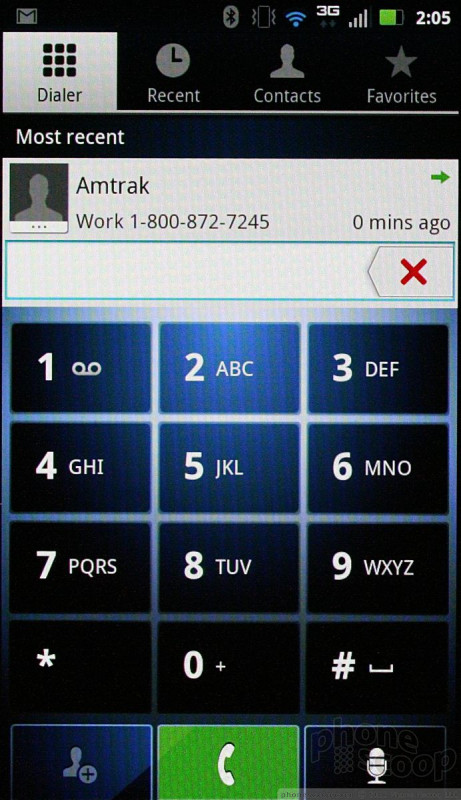






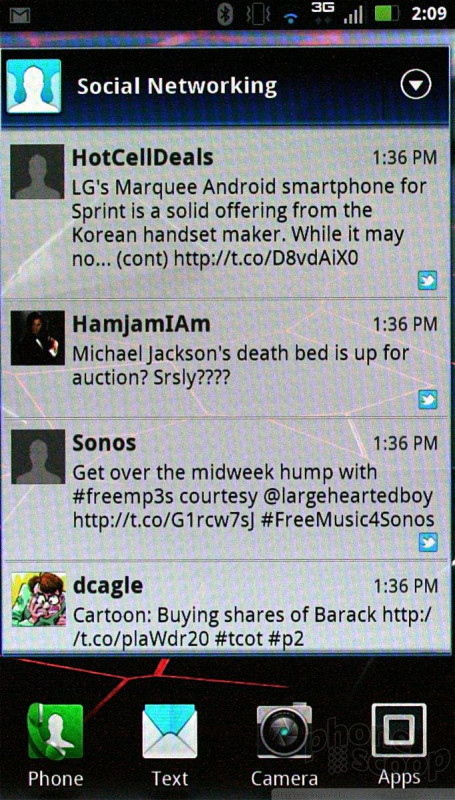







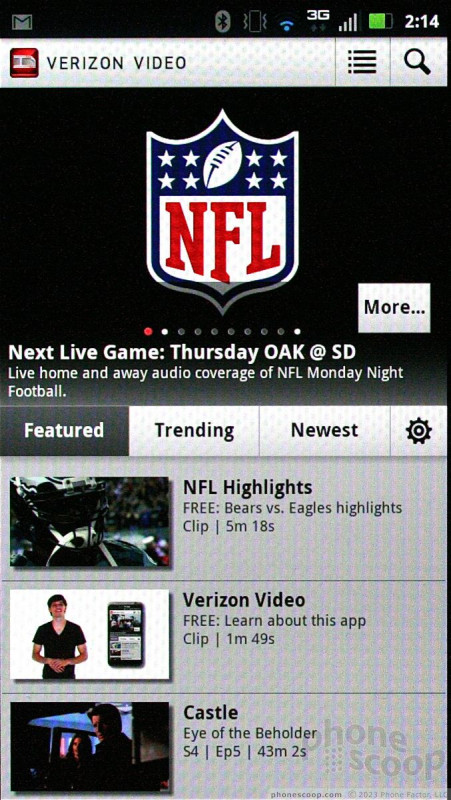





























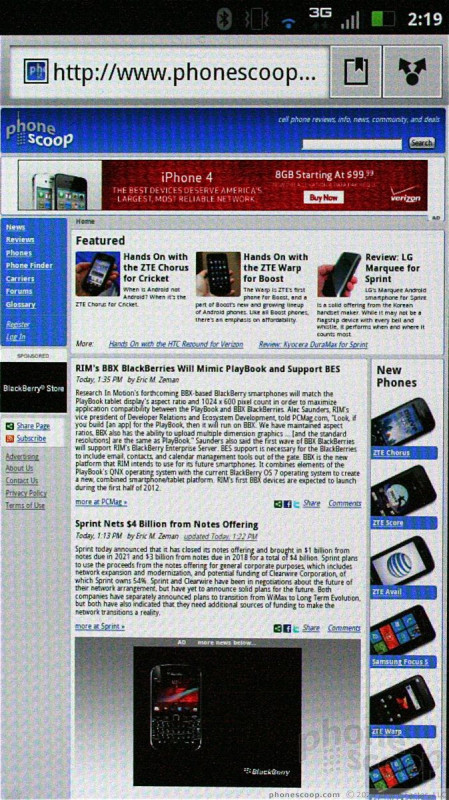



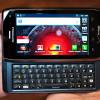 Hands On with the Moto Droid 4 and Droid RAZR MAXX
Hands On with the Moto Droid 4 and Droid RAZR MAXX
 Review: Motorola Droid RAZR for Verizon Wireless
Review: Motorola Droid RAZR for Verizon Wireless
 Hands On with the Motorola Droid RAZR and ACTV
Hands On with the Motorola Droid RAZR and ACTV
 Motorola and Verizon Announce the 7.1mm Thick Droid RAZR
Motorola and Verizon Announce the 7.1mm Thick Droid RAZR
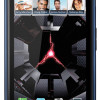 Blue Moto Droid RAZR Hitting Stores Starting Today
Blue Moto Droid RAZR Hitting Stores Starting Today
 Motorola Droid RAZR
Motorola Droid RAZR
 Motorola Droid RAZR MAXX
Motorola Droid RAZR MAXX









